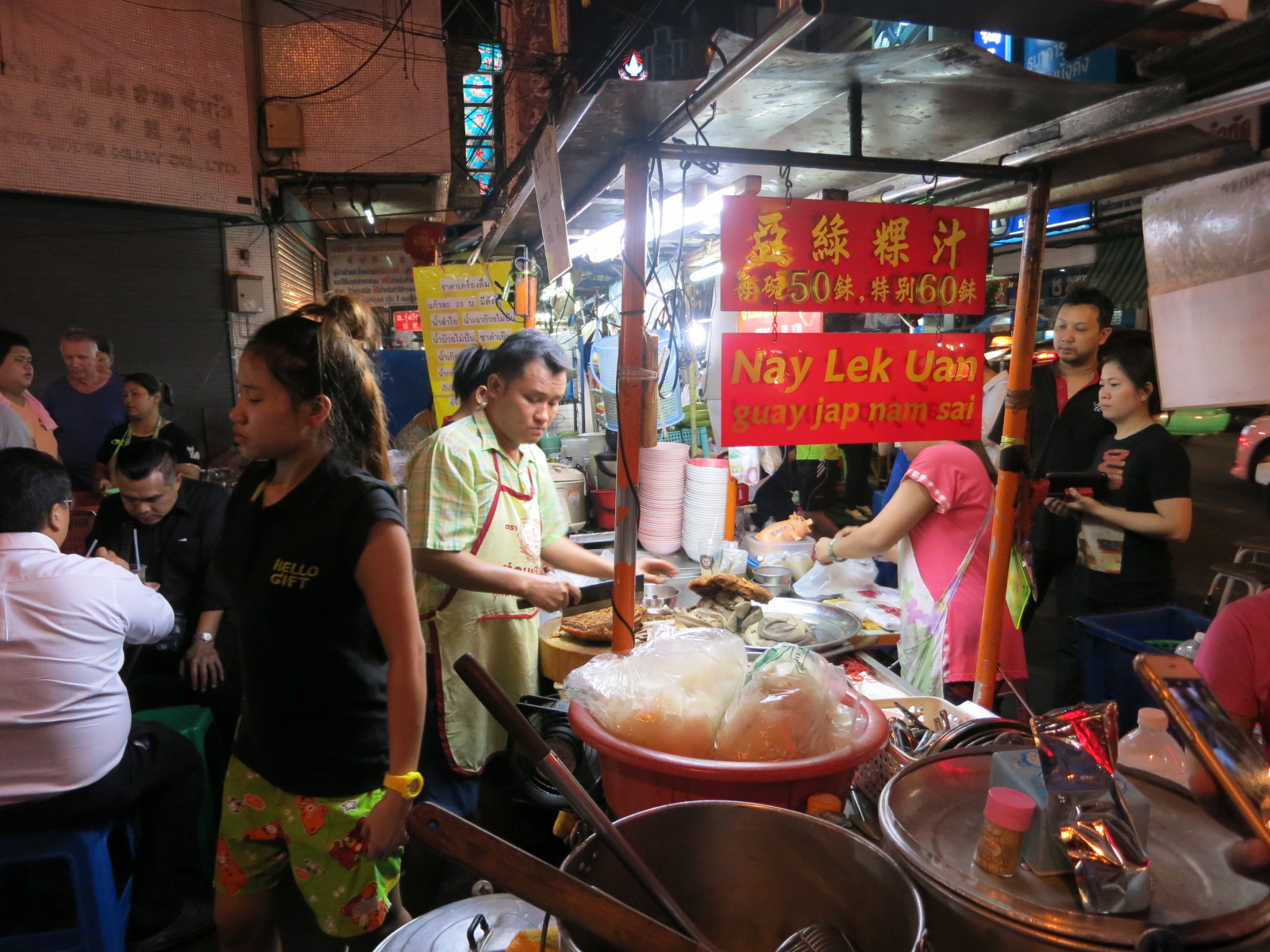A few days ago I shared reports from the Bangkok Post and elsewhere that the military administration was pushing out street food vendors.
I suggested that some vendors rent space in front of stores rather than squatting on public streets, and that local jurisdictions were all interpreting the new edicts the same way so some street food would survive — and some of the best places are in actual hole in the wall restaurants — however limits on street vendors raise costs and create barriers to entry, reduce competition, and will limit food quality over time.
Bangkok’s administration is backpedaling on the outright ban on street food that was being discussed, but they’re still talking about rules that will neuter the open free-for-all that’s created the vibrant food culture in the city.
THE GOVERNMENT is planning to transform Bangkok’s China Town and Khao San Road into well-organised areas for street food vendors.
“We will allow street stalls, as long as they comply with our regulations on zoning, stall designs, green packaging and hygienic standards,” Second Lieutenant Pornchanok Amphan, a spokeswoman for the Defence Ministry, said at a press conference yesterday.
She said the decision had been made by the country’s fifth reform steering committee.
For example, she said, stalls in the China Town, or Yaowarat, area should be in the style of Chinese pavilions, while stalls on Khao San Road should be designed as Thai pavilions.
Food vendors in the two streets will also be required to receive training to ensure they conduct their businesses appropriately, she said.
Since it came to power, the National Council for Peace and Order has pursued a policy to ban street stalls, describing their presence as a violation of pedestrians’ rights.

The goal, reportedly, is to limit street food and to sanitize it for farang:
Chairman of Advisers to Governor of Bangkok Vallop Suwandee refuted the circulating news, stating:
“It is very far from the truth. In fact, it is the opposite. Khao San and Yaowarat roads are two main centers of tourism in Bangkok. Therefore, the BMA is making plans to help preserve this Thainess for foreigners. We are simply putting stricter regulations to keep these areas in order, ranging from the hygiene of the food served to the prevention of food waste thrown into the streets. We are not stopping the stalls from selling their food, but are just regulating the quality and order.”
When asked about the fate of future street food areas around Bangkok, Vallop explained that areas including Victory Monument, Siam Square and parts of Sukhumvit are likely to be cleared. Khao San and Yaowarat roads, however, are prime hubs for tourists and thus the BMA are keeping them as the only two exceptions.
Thais frequent street food, it isn’t just for tourists. And while some people will see limiting street food to certain places as being something like the Singapore model, Bangkok isn’t Singapore and Singapore doesn’t gear most of its hawker centers towards tourists (well, maybe Newton Road).
The Singapore model actually subsidizes the land use, while the description of Bangkok’s plan is about placing limits and higher costs (including what seems like licensing as well as specific design requirements) on vendors. There will only be a few places where street food is available, rather than scores of places in Singapore. That’s bad for competition, for experimentation, and for the Thais who make their living with the craft.
(HT: Martin B.)


Gary
it all could be the old plan of ask for something outrageous and settle for what they really want to do ( and be praised for listening to the public).
Almost all street food in Bangkok was absolutely disgusting when I tried it. No sanitation considering, no proper storage of meat/eggs. They probably should ban it or regulate it more, like they do in Singapore.
@atxtravel – you don’t like fried crickets or grubs? I do like the bite sized grilled chicken on a stick, but that is all I feel I can safely eat. Trying to walk down the sidewalk where there are hawkers is quite an adventure – not much room and olfactory overload. But I thought it was fun.
Hawker stalls in Singapore are so overrated. Oily, MSG laden food whose only selling point is that it’s cheap. Compare hawker stalls to the food truck scene in the US and there’s no comparison. Yes, food trucks charge more but there has been innovation and the food can be healthy and delicious.
The Thai military junta is ruining Thailand. When the ruling class realized that they could no longer win free elections (trumped up claims of voter fraud for example), they backed a military takeover that would ensure their stranglehold on power and economic opportunity would continue unchallenged. It is the Thai people, not tourists, who will suffer from a ban on street food. A large percentage of low rent Bangkok apartments do not allow cooking or only on a very limited basis – they don’t have kitchens.
Part of the character of Bangkok is the street food scene so I hope that doesn’t change too much. Some say it’s not hygienic but I can say from experience from two expats living in Thailand (Chiang Mai) that in the 2 years we have been there we have never been sick from street food including Bangkok’s.
I’m pretty sure I always be able to find my favorite khao man gai (วิธีทำข้าวมันไก่) seller just a few steps from my condo no matter what they say will change